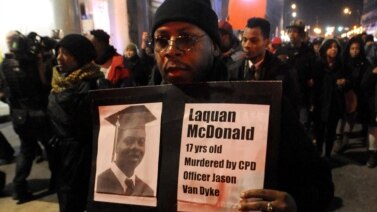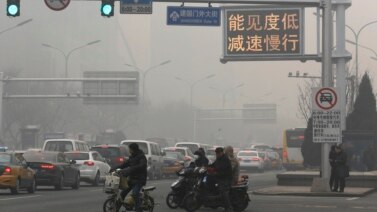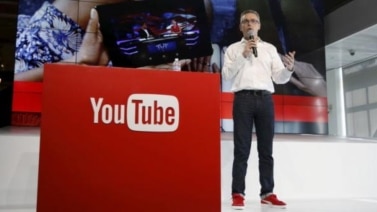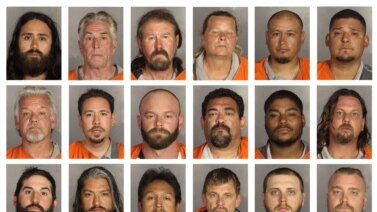Social media are changing the ways that U.S. police departments and other government agencies operate. New media are closely watching movements by police officers, and keeping cars and trucks moving on congested roads. But some are also raising questions, especially among police officers.
LA Metro is the name of the Los Angeles public transportation system in California. It operates buses and trains in the Los Angeles area.
At LA Metro, some workers spend a good part of their day looking at video images of busy intersections and buses driving around the city. Their job is to watch video screens for traffic delays or other signs of trouble.
The transit system uses information from its cameras and sensor equipment. The workers will soon use data from a social media application called Waze. It uses reports from drivers who note real-time traffic conditions.
The American technology company Google owns the application software, or app. Waze has partnered with cities around the world, from Rio de Janeiro to Jakarta, to better understand traffic flow in populated areas.
Kali Fogel works for LA Metro. He says the transit system must have up-to-date information.
“Data is king, so to have a lot of data is very important. We have a lot of infrastructure data. What crowd-sourcing and apps like Waze allow us to do is to fill in the gaps.”
Freda Sideroff lives and drives in the Los Angeles area. She depends on Google Maps and other navigation apps to deal with the traffic.
“It is so useful, I use it every day.”
The California Department of Transportation communicates with drivers through message signs on roads, its highway mapping website, and social media sites like Twitter.
Patrick Chandler is a spokesman for the department. He says traffic managers see millions of trips each day.
“But the system is old. It’s 60, 70 years old, and so we try different things to maximize capacity beyond just building new freeways or interchanges or widen the freeways. We try different ways to inform travelers of the conditions that are ahead of them.”
Police departments are also using social media to communicate with the public. But some police worry that apps like Waze may create a danger to officers because Waze can identify the positions of police officers. They note violence during recent protests in several U.S. cities. The demonstrators were protesting police involvement in the deaths of African-Americans. Several police officers were killed in separate incidents.
Charlie Beck is the police chief of Los Angeles. He expressed his concern about new media to Google in December 2014. But a spokesman for the company did not respond directly to his concern. The spokesman said that Google works with police to keep officers and citizens safer.
Civil rights groups are using their social apps to urge citizens to keep watch on the police. These developments demonstrate the growing importance of social media for the public, police and other agencies to communicate and gather information.
I’m Jonathan Evans.
VOA’s Mike O’Sullivan reported on this story from Los Angeles. Triwik Kurniasari adapted it for Learning English. George Grow was the editor.
Words in This Story
congested – adj. overcrowded, full
intersections – n. places where two or more streets cross each other
data – n. information used to estimate or plan something
real-time – adj. relating to the time during which something happens
freeways – n. roads on which vehicles can operate freely, without a payment





